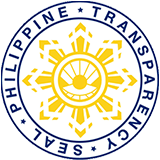
August 28, 2023
The Philippines, an island surrounded by bodies of water, is vulnerable to storm surges. Filipinos often hear in warnings in weather reports of a possible storm surge in coastal areas during typhoons. The populous Metro Manila experienced a storm surge caused by Typhoon Pedring in September 2011 when the sea walls of Manila Bay were destroyed and the US Embassy and Sofitel Philippine Plaza were submerged in floodwaters.
A storm surge causes severe flooding, that was all we knew until the devastation of Tacloban City by Super Typhoon Yolanda on November 8, 2013. The images and the testimonials that we saw and heard in media became a grim realization that Filipinos must not only know but try to understand what a storm surge is.
Some storm surge survivors in Tacloban City claimed that if the warnings were that of a tsunami, they would have known what to expect and do. ABS-CBN’s TV Patrol anchor, Ted Failon, who had first- hand experience in ground-zero on the day of the devastation, commented there was no direct translation of storm surge in Filipino. He added that the nearest word to describe it is “daluyong” or “wave” or even “tidal wave.” Meanwhile, Dr. Armando Lee, a health emergency management staff from the Department of Health-National Capital Region suggested in a Facebook post to call a storm surge as “taclob,” a pun for “taklob” which means “to cover” and also “Tacloban,” the worst hit city.
Until such time that someone can come with the right and acceptable Filipino word for storm surge, it is important to define it first. A storm surge is not a tsunami or a tidal wave. A tsunami is a giant wave caused by earthquakes or volcanic eruptions under the sea or landslides into the sea, while a tidal wave is a gigantic wave caused by the force of the moon and sun (astronomical tide). A storm surge is the rising of the sea level associated with the passing of a tropical storm or typhoon. This is due to the push of strong winds on the water surface, the piling up of big waves, pressure setup and astronomical tide moving towards the shore. In other words, the stronger the winds or the larger the storm the higher the surge.
The DOH released the following advisory which is based on the US National Oceanic and Atmospheric Administration (NOOA) information on what to do before, during and after a storm surge.
Planning for a storm surge and evacuation could save lives. Be prepared. Know the hazards that may affect you, your family, and your home. Make plans for where you’ll go if told to evacuate. Have a disaster supply kit within reach. Stay tuned to local radio and television stations, and listen for advisories or specific instructions from your local officials.
Before A Storm Surge
Know if your area is at risk
Know the types of hazards that could affect your home and family
Assess your risks and identify ways to make your home and property more secure. Make a disaster evacuation plan.
If you live close to the floodplain, consider flood insurance.
Locate the safest areas in your home, and decide on an escape route should you need to evacuate.
During A Storm Surge
Monitor radio and television for the latest news and advisories.
If local officials ask you to evacuate, do so IMMEDIATELY!
Stay away from floodwaters. If you come upon a flowing stream where water is above your ankles, stop, turn around, and go another way.
Keep children out of the water.
If you come upon a flooded road while driving, DO NOT attempt to cross flowing water.
After the Flood
Return home only when officials have declared the area safe.
During cleanup, wear protective clothing, including gloves and boots. Make sure your food and water are safe.
Do not use water that could be contaminated to wash dishes, brush teeth, prepare food, wash hands, make ice or make baby formula. (Remember that breastfeeding is a lifeline and a shield that protects infants in emergencies and disasters. – Ed)
Previously published in HealthBeat Issue No. 79 2013
Related Posts




